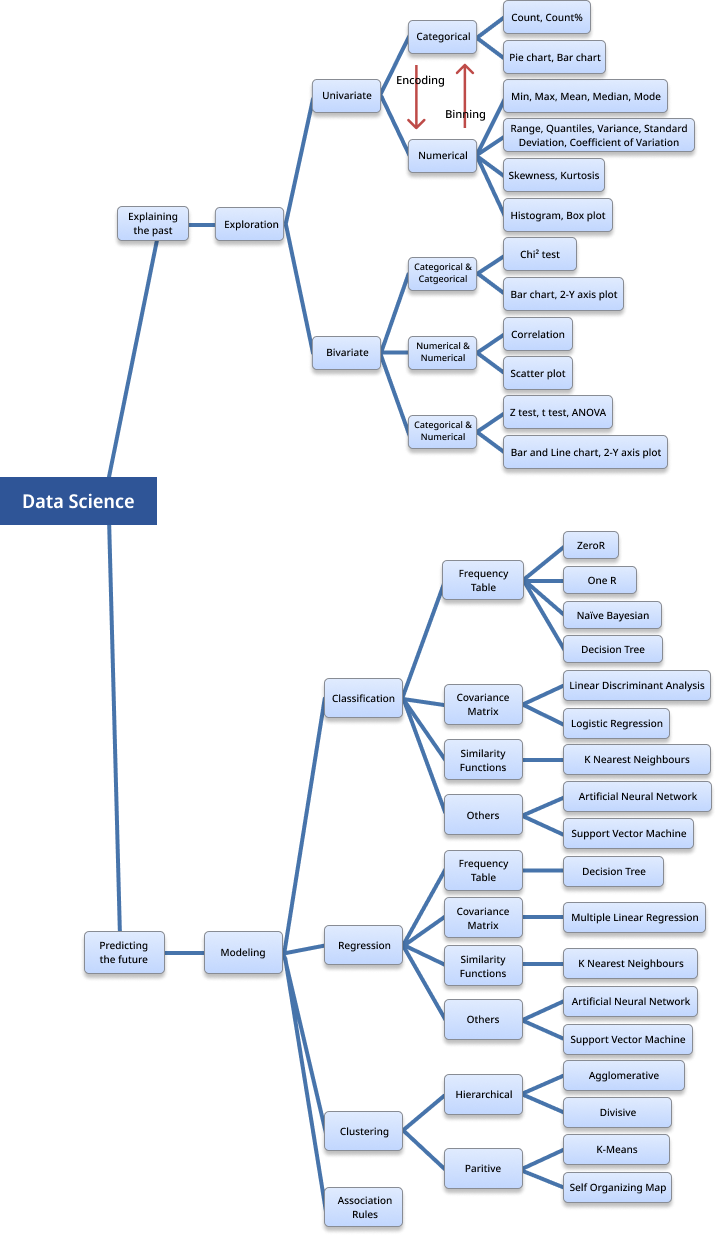Difference between revisions of "Data Science: Overview"
Onnowpurbo (talk | contribs) (Created page with "center|800px center|800px") |
Onnowpurbo (talk | contribs) |
||
| Line 1: | Line 1: | ||
[[File:Data-Science lifecycle 1.png|center|800px]] | [[File:Data-Science lifecycle 1.png|center|800px]] | ||
| + | |||
| + | The attached figure represents the '''Data Science Workflow''', illustrating the key stages in a structured data science process. It begins with '''Problem Definition''', where the business or research problem is clearly identified to ensure the right objectives are set. Next is '''Data Preparation''', which involves gathering, cleaning, and transforming raw data into a usable format. This step ensures that the dataset is structured and free from inconsistencies, making it ready for analysis. | ||
| + | |||
| + | Following preparation, the '''Data Exploration''' phase focuses on analyzing patterns, trends, and relationships within the data. This helps data scientists gain insights and identify potential features for modeling. The '''Modeling''' stage involves applying machine learning or statistical models to make predictions or classifications. Once a model is developed, the '''Evaluation''' phase assesses its accuracy and performance using validation techniques. Finally, the '''Deployment''' stage integrates the model into real-world applications, ensuring it provides value to end-users. This workflow ensures a systematic approach to solving complex data problems efficiently. | ||
| + | |||
| + | |||
[[File:DataMiningMap salar.png|center|800px]] | [[File:DataMiningMap salar.png|center|800px]] | ||
Revision as of 14:30, 11 February 2025
The attached figure represents the Data Science Workflow, illustrating the key stages in a structured data science process. It begins with Problem Definition, where the business or research problem is clearly identified to ensure the right objectives are set. Next is Data Preparation, which involves gathering, cleaning, and transforming raw data into a usable format. This step ensures that the dataset is structured and free from inconsistencies, making it ready for analysis.
Following preparation, the Data Exploration phase focuses on analyzing patterns, trends, and relationships within the data. This helps data scientists gain insights and identify potential features for modeling. The Modeling stage involves applying machine learning or statistical models to make predictions or classifications. Once a model is developed, the Evaluation phase assesses its accuracy and performance using validation techniques. Finally, the Deployment stage integrates the model into real-world applications, ensuring it provides value to end-users. This workflow ensures a systematic approach to solving complex data problems efficiently.

